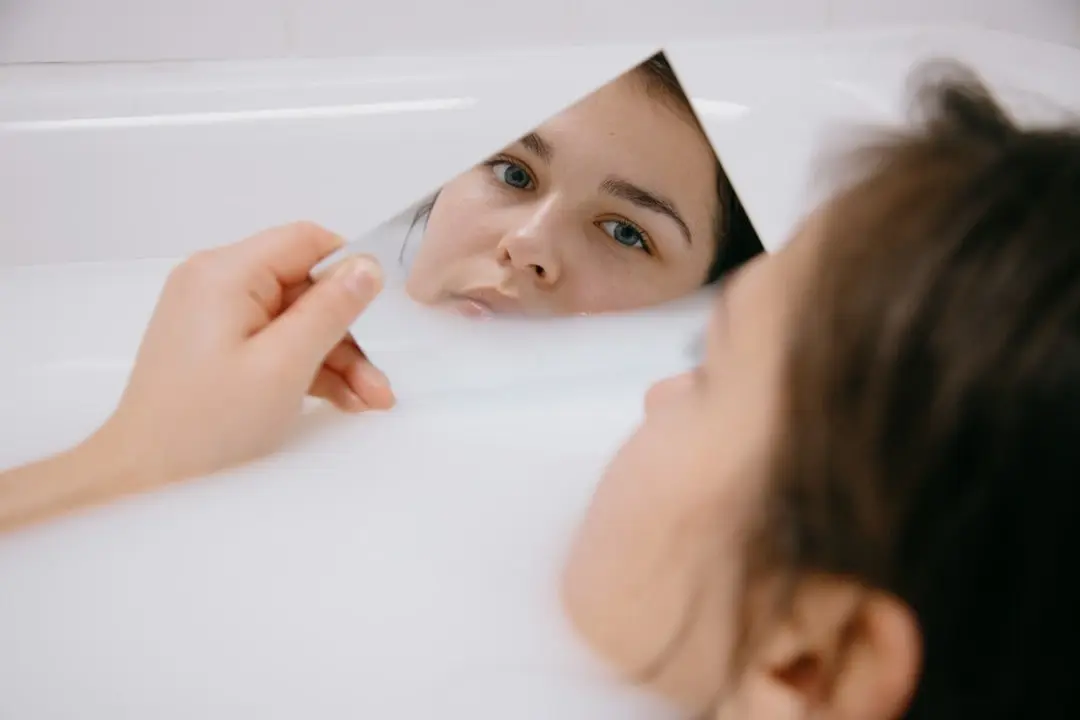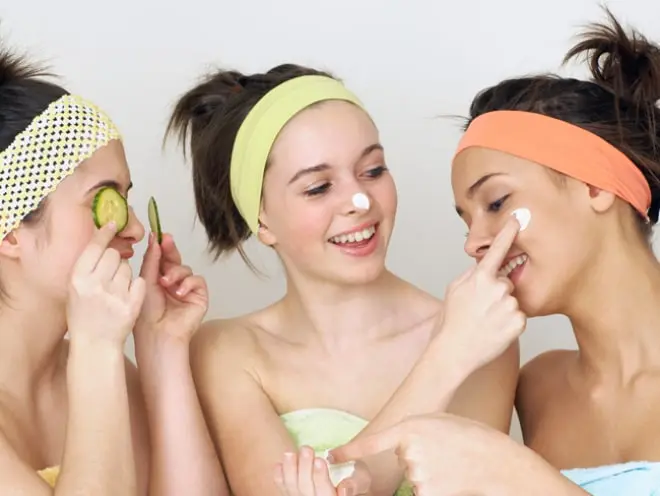 10 Most Common Teen Skin Conditions
10 Most Common Teen Skin Conditions
Your teen may seem like another drama-filled teen moment if you find him or her obsessing over their skin in front of the mirror in their room. Thus, this is predictable that teens may be tempted to hide serious skin health issues out of embarrassment, Therefore, it is important for parents to be aware of changes in adolescent skin health and to help them determine when to see a dermatologist. This blog has serious title to share with you. Ten of the most common teen skin conditions, their warning signs, and some overall treatment options, but always keep in mind that get therapeutic advices from experts like dermatologists. Estheticians also may help you if your case is related to them.
1 – Acne
Acne is the most common teens' skin condition, and it is highly treatable when managed together with your dermatologist. Acne occurs when the pores in the skin become clogged. During the boyish years, beyond amounts of sebum, the oil that keeps bark moisturized, is produced. This production leads pores to clog, trapping numerous dead skin cells that stick together within the pores. This creates pimples. When the high production of sebum oil is common, anyone can develop pimples, especially during the teen years. While the common skin bacteria Propionibacterium acnes (p. acnes) are noticeable within the clogged pores, the result is redness, swelling, and inflammation that goes deep into the skin, causing acne cysts and nodules.
Symptoms
The appearance of Acne can be anywhere on the body, but it is most common on the face, neck, chest, back, shoulders, upper arms, and buttocks. Teens who suffer from acne may have:
- Blackheads – open clogged pore
- Whiteheads signs– they are closed clogged pore
- Papules – small red bumps
- Pustules – papules that have pus in their tips
- Cysts – painful, pus-filled lumps
- Nodules – hard, painful lumps
Overall Treatment Options that might generally mentioned
You may want to visit a dermatologist for more advanced acne treatments, if improving your teen’s daily skin-care routine doesn’t help. Some of the many treatment options available to address acne include:
- Topical antibacterial ointments
- Topical treatments that have effect on reduction oil production
- Antibiotics to reduce the numbers of p. acnes bacteria
- Hormone therapies (typically only for women with acne)
- Isotretinoin for severe cases (requires medical supervision)
- Laser and light therapies, LED Light Therapy at Mediterranean-Beauty Day Spa may help your condition, get consultation before involving in action (614) 940-0886.
- Chemical peels
- Professional acne removal
2 – Eczema
Rashes, itching, swelling, and irritation of the skin are all considered to be eczema. It may also be called dermatitis. It most often occurs on the face, inside the elbows and knees, and on the hands or feet. Even though the condition is usually very itchy, scratching can spread the condition and lead to more inflammation, so it should be avoided. There is no cause for eczema or dermatitis and it may be due to genetics and the environment. Adolescents with eczema and atopic dermatitis may feel ashamed and think that they may spread their skin disease to others, so it is important for them to know that their condition is not contagious. Eczema is actually most common in infants and children, and it can often improve with age and even go away. Teens and adults of all ages may also struggle with eczema, and they are at greater risk if they experienced the condition as children.
Symptoms
Itching is the most common warning sign of eczema, but there are many different forms of the condition. Symptoms can be wide-ranging and include:
- Severely dry skin
- Redness and irritation of the skin
- Sensitive skin
- Inflammation and swelling
- Itching
- Scaly or rough patches
- Oozing or draining sores
- Darkened skin coloring
Overall Treatment Options that might generally mentioned
It is essential to avoid products and materials that can trigger a reaction since eczema is worsened by irritation. That means the first step to successful treatment is knowing what triggers your flareups. Your eczema treatment plan may also include the following:
- Keep track of new foods, skin care, or cleaning products that may cause flareups or changes in the skin’s appearance
- Utilize mild cleansers and intense moisturizers in your bathing and moisturizing routine
- Take antihistamines on a daily basis to avoid itching and inflammation
- Follow your dermatologist's or general practitioner's directions for oral or topical medications and ointments, including steroids
Keep nails cut short to avoid injuring skin if you scratch during sleep.
 Acne Treatment
Acne Treatment
3 – Dandruff
Dandruff is a condition that causes the skin on the scalp to dry out and flake off in large pieces. Like eczema, the exact cause of dandruff is unknown. Teens with dandruff often claim that the condition occurs because their hair isn't being correctly washed, brushed, or otherwise cared for. Let your teen know that lack of cleanliness doesn’t cause dandruff, and the condition is nothing to worry over or be embarrassed about.
Symptoms
The main symptom of dandruff is noticeable white patches of skin that appear on the hair and on the shoulders, but this is not the only warning sign of dandruff. Ask your teen if he or she has noticed any of the following:
- White flakes in the hair or on clothing
- Itching or burning in the scalp
- Eczema or rash on face, especially around the ears, nose, eyebrows, and beard
- Oily skin that also has dry patches and flakes
- Rashes on other parts of the body that are red or inflamed with dry flakes of skin
Overall Treatment Options that might generally mentioned
There are numerous at-home remedies for dandruff, including a wide range of dandruff shampoos and treatments you can find in your local pharmacy. When you work with a dermatologist, they will likely recommend some combination of the following treatments:
- Use of tar-based, zinc pyrithione, or selenium sulfide shampoos or hair treatments (use in hair and on other irritated areas)
- More Frequent hair washing
- Treat skin inflammation with hydrocortisone cream or prescription steroid cream
- Remove dandruff flakes by brushing hair frequently
- For severe cases, prescription oral steroids may be recommended
4 – Athlete’s Foot
As the name implies, athlete's foot is an infection that occurs on the toes, feet, and ankles as a result of fungus growth. The technical term is tinea pedis. Because it often happens when people sweat their feet, athletes are very susceptible to this complication, which is why it is often called athlete's foot. While most cases of athlete’s foot can be treated with over-the-counter products, it’s usually a chronic condition that your teen may struggle with off and on for many years.
Symptoms
If you or your teen notice any of the following warning signs, it’s important to start treatment for athlete’s foot right away:
- Red, inflamed rash usually starting between the toes
- Itching that is especially pronounced immediately after removing shoes
- Dry, scaly, hard skin with a white coloring on the soles and sides of feet
- In severe cases, blisters or ulcers also occur
Overall Treatment Options that might generally mentioned
The best treatment for athlete’s foot is prevention, this works for many people. By taking precautions in locker rooms, swimming pools, and other damp areas, you can protect your feet from fungus. If your teen develops athlete’s foot, it’s important to avoid spreading the condition through scratching or by wearing clothing that has come in contact with the fungus. Depending on the severity of your teen’s condition, a dermatologist may recommend a combination of the following treatments:
- Wash feet thoroughly and dry them completely before putting on socks and shoes
- Apply topical antifungal ointment to feet and toes regularly
- Put the antifungal powder in shoes and on socks
- Take prescription antifungal medications as directed
5 – Cold Sores
Its most common location is around or inside of the mouth, but cold sores can also occur on the nose and anywhere else on They are caused by the herpes simplex virus type 1 (HSV-1). Most people are exposed to HSV-1 in young children or toddlers using eating utensils, cups, towels or other common items. The virus can remain dormant for years after a person is exposed to HSV-1. Teens often develop cold sores after years with dormant HSV-1 due to hormonal changes during these developmental years.
Symptoms
In the initial stages, cold sores are blisters that then develop into sores filled with fluid. Eventually, the blisters turn into scabs and flake off. In most cases, herpes is chronic and often reappears. The symptoms of herpes that you and your teen should be aware of are:
- Blisters and sores usually on or around the mouth
- Pain or burning sensation
- Red, inflamed, or swollen gums
- High fever
- Muscle aches or weakness
- Nausea or ill feeling
- Swollen glands
Overall Treatment Options that might generally mentioned
Your teen's herpes will probably go away on its own within a few weeks. However, wounds can be very painful, so taking steps to relieve symptoms can significantly improve comfort. Some treatments for herpes include:
- Use ice or a cold compress to relieve pain
- Take oral pain medications (over the counter or prescription) as directed
- Use topical numbing medications to relieve discomfort
Use over the counter or prescription oral or topical medications as directed.
 Teen Skin Conditions
Teen Skin Conditions
6 – Excessive Sweating
The technical term for excessive sweating is hyperhidrosis. Everyone sweats when they put pressure on themselves, experience stress, or become overheated. Sweating is one of the ways the body regulates its temperature. Hyperhidrosis is sweating that occurs when the body does not need to be cooled down. The excessive sweat can be expelled from any part of the body, but those with hyperhidrosis most often sweat from the palms, feet, underarms, or their head. Even if the rest of the body is cool and free from sweat, the areas where the patient experiences hyperhidrosis may drip with moisture.
Symptoms
Sweating is a natural and necessary process, but if your teen is experiencing any of the following symptoms, they may need to seek treatment for hyperhidrosis:
- Even when at rest, sweat stains on clothing or dripping sweat is visible
- Dripping sweat interferes with the ability to perform regular activities
- Areas of the skin where sweating occurs become softened, pale, or peels
Overall Treatment Options that might generally mentioned
Like some of the other skin conditions we've looked at, teens with hyperhidrosis can be very embarrassed. Fortunately, a dermatologist can help teens with hyperhidrosis reduce excessive sweat production through a number of treatment options, including:
- Daily use of prescription or over the counter antiperspirants
- Iontophoresis electric current treatment for hyperhidrosis in the hands and feet
- Botox injections in the underarms
- Prescription oral medications that temporarily prevent sweating
- In severe cases, sweat glands may be surgically removed
7 – Sunburn
Sunburn is a bake that occurs due to overexposure to sunlight. Any accommodating can acquaintance a sunburn, but adolescence may be at college accident if they participate in alfresco able-bodied contest and abort to administer sunscreen. Daily application of sunblock can help reduce the risk for and severity of sunburn in people of all ages. Since sunburn is one of the leading causes of many skin conditions, including cancers, protecting skin from sun damage at all ages is important.
Symptoms
If you or your teen notice any of the following symptoms after sun exposure, you should begin treatment for sunburn right away to limit long-term damage:
- Change in skin color, typically red or pink coloring
- Affected areas feel warmer than unaffected areas
- Burned areas ache or feel bruised
- Sunburned skin tightens and itches
- Severe sunburns swell or blister
- People with very bad burns may experience headache, nausea, or exhaustion
Overall Treatment Options that might generally mentioned
The ideal option is to avoid sunburn altogether by limiting time spent in the sun, using sunscreen every day, and covering sensitive areas with protective clothing and hats. Once sunburn occurs, you can take the following steps to relieve discomfort and promote healing:
- Take over the counter pain relievers
- Take a lukewarm bath or apply a cool cloth to the affected area
- Keep burns moisturized using aloe vera or other intense moisturizers
- Don’t pop blisters that appear, and clean those that break on their own
- Gently remove peeling skin and continue to moisturize the area
- Cover burned skin to prevent additional exposure to sunlight
8 – Psoriasis
Psoriasis is an immune system disorder that causes the body to grow excess skin cells, which can create red, scaly rashes on the body and face. While it’s often passed down genetically, that’s not always the case. In fact, according to the AAD, psoriasis is an incredibly common disorder that affects an estimated 7.5 million people in the United States.
The skin patches characteristic of psoriasis, which can sometimes feel itchy, are “usually located in the scalp, elbows, and knees,” Shilesh Iyer, M.D., a board-certified dermatologist with the New York Dermatology Group said.
Overall Treatment Options that might generally mentioned
People with more mild cases of psoriasis may be able to get by with over-the-counter treatments, including topical steroids, anti-dandruff shampoos, and coal tar — but Dr. Iyer recommends seeing a dermatologist for guidance regardless.
9 – Rosacea
Rosacea is characterized primarily by redness in the cheeks, though it can progress beyond that. “In the beginning it may manifest as just easy flushing and blushing,” Dr. Iyer says. “But sometimes it will progress [to the point] where patients may start to get breakouts, or feel that their skin is uneven or splotchy, usually on the center of the face – so the cheeks and nose.” Though it typically manifests in early adulthood, he notes that patients often have a history of redness dating back to childhood or adolescence. Dr. Iyer says people with rosacea may also feel skin sensitivity, tingling, or burning.
Overall Treatment Options that might generally mentioned
“People who have a propensity toward rosacea will always have that propensity,” Dr. Iyer adds. “So, the more effectively managed it is, [that] will prevent it from progressing.”
10 – Seborrheic Dermatitis
Seborrheic Dermatitis is essentially a more advanced form of dandruff, which manifests in the form of flaky patches, redness, and oily areas of the skin. While it largely affects the scalp, Dr. Iyer says it can also appear on the eyebrows and sides of the nose; and it may affect the ears, eyelids, and chest as well.
Overall Treatment Options that might generally mentioned
it can be mistaken for dandruff. Once it is diagnosed, he says seborrheic dermatitis is often treated with prescription topical medications, but dermatologists may sometimes pair prescriptions with over-the-counter treatments, like dandruff shampoos.
When to Call a dermatology center about Teen Skin Conditions
Teens often feel embarrassed, and they won’t say anything about their skin problems. Make sure you’re paying attention and encourage teens to get help with these conditions when they need it. If you are concerned with teen skin conditions, call any of the conveniently located dermatology offices near you to schedule an appointment.
 Skincare Routine
Skincare Routine
Organic Beauty Skincare has something to offer everyone, regardless of skin type and it is much safer. The estheticians at Mediterranean-Beauty Salon & Spa are here to help decide which service is the right choice for you. Clearer, smoother, more beautiful skin could be just a phone call away. We start our facial treatment with consultation and analyzing each client’s skin first, then we are making special their own facial mask with different type of herbs also the massage oil will be made with their type of skin. Cleansing and Derma planning are first step of our treatment to open the skin pores. During the facial treatment we use 8 hot towels for better penetration!
LED light will apply to even the skin tones and boosting the collagen under the skin!
We use all organic and herbs products which we mix it at the time for each client depending on their skin type! If you prefer you can book your Appointment online if you were our customer. In any case Give Us a Call at (614) 940-0886 today to schedule your next facial or get free consultation with present analyzing skin process, before getting your Organic Natural Facial Beauty Packages or Services specially based on your skin condition.
Imagine your day in Worthington, Ohio. You prefer to go Salon or Spa with Organic Products and Natural Methods which has some treatments for 10 Most Common Teen Skin Conditions. Mediterranean-Beauty Day Spa is exactly what you want.
Trust us on making you shining and healthy in organic ways.
693 1/2 High Street, Suite A,
Worthington, OH 43085
(614) 940-0886